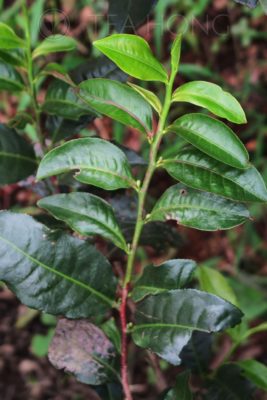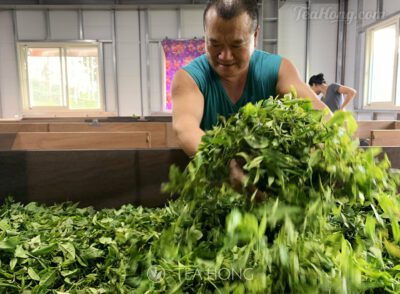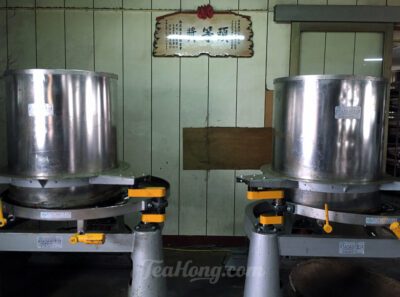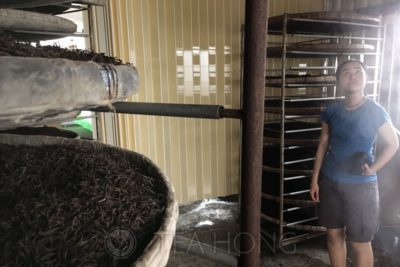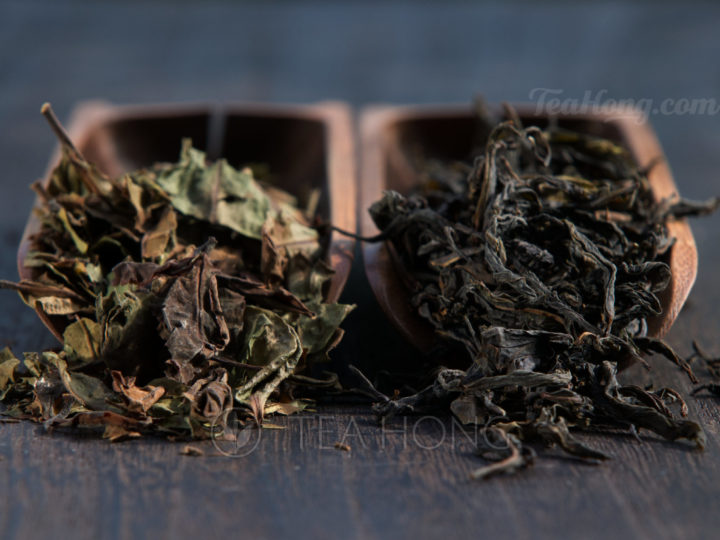Red Jade: rare gem of a tea
For those who think Red Jade is just another marketing name, “Hong Yu” — properly transliterates as “Red Jade” — is the official name given by the Taiwan tea research authority to the cultivar TTES*#18. Somehow they have adapted the English name as “Ruby” which is not quite correct, so we have kept the correct transliteration instead.
Red Jade is not an ordinary tea plant. One of its parents is a unique species found only in Taiwan — Camellia formosensis, i.e. it is not a variety of Camellia sinensis. This very different nature is one reason for the unique taste of the tea.
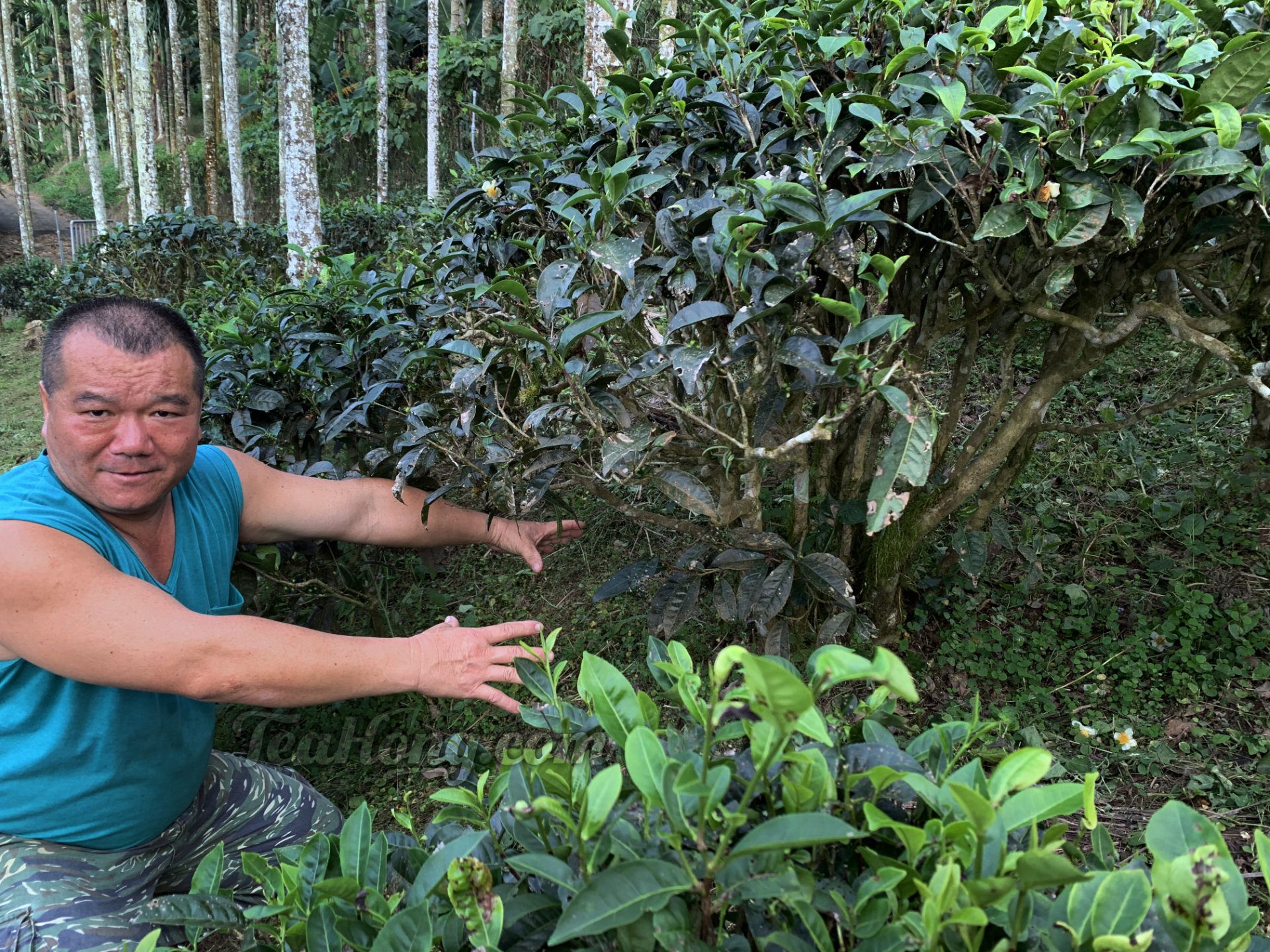

A large portion of Master Li’s Red Jade tea plants grow in the wild in one of the mountain slopes in Yu Chi. Since his disgust of chemicals, none are used in the plants. Bugs are a constant problem. He is talking about what would happen to a few of his ant infested bushes.
A different species of tea plant
As early as the 1940’s an uncommon looking wild tea plant was discovered and studied in Yu Chi, an area near the popular resort Sun Moon Lake. Taiwan experienced quite a bit of turmoil around those years and it was not until the late 70’s that more research work picked up again.
A successful cultivar was produced in the late 90’s by crossing the original plant with a cultivar of Camellia sinensis variety assamica. This close connection with a wild plant gives the final product a vibrancy not found elsewhere.
A true craft in its own rights
Skip its ancestry and the painstaking production processing, what tastes in the cup makes it an exceptional connoisseur’s delight: full-bodied, smooth, bold, malty, yet minty and herbally complex. We have worked hard to come up with our selections for you to experience what is truly represented by its nickname: the Fragrance of Taiwan.
Visit the gallery below to see the plant and its production process.
* TTES is short for Taiwan Tea Experiment Station, of Council of Agriculture, Taiwan ROC
Photo gallery: Red Jade processing
- The tea cultivar for producing Red Jade black tea — Hong Yu — is a unique looking one that reflects the wild nature of its ancestry
- The very cute son of one our Taiwan farmers has been one of the fondest memories in this particular tea farm visit. Hong Yu tea garden in the background
- Master Li turns leaves in one of the troughs in his withering chamber. Hong Yu Black Tea, aka Red Jade, takes a very long time to wither during which the pile temperature has to be monitor all the time. The leaves are turned for even cooling and withering.
- So your tea is not rolled under the foot like it used to be a hundred years ago. Semi automatic machines, like these tea rollers, are now a staple in most farms.
- A young tea master loosening entangled tealeaves after they have been rolled. This helps in more even and effective oxidation in the later oxidation process.
- The distinct aroma and deep colours of the freshly rolled leaves even before oxidation are indicative of the intense withering that is fundamental to high quality black tea
- Automatic mist spray from above in the oxidation chamber. Climate control during the long hours of oxidation ( fermentation ) of the tealeaves is key to the gastronomic quality of the product.
- Besides reading off instruments for monitoring oxidation progress, the leaves are periodically tasted for fine-tuning the conditions in the fermentation chamber
Two varieties from Hong Yu
We offer two types of tea from the Hong Yu tea plant: Red Jade, the black tea; and Hong Yu Deep White, a white tea that takes much longer shaded withering than the black tea but no oxidation process.


Red Jade, also called Hong Yu black tea, is produced from a very special local cultivar TTES#18, which gives the tea’s distinctive taste profile
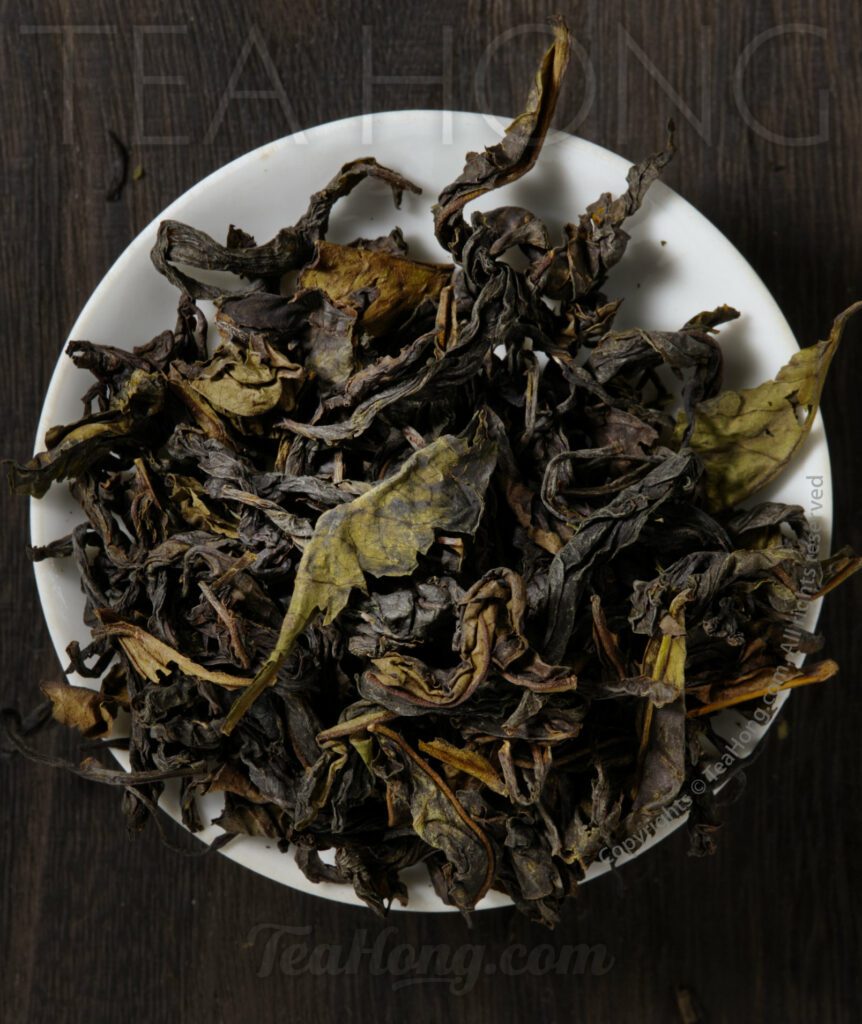

The darker tea leaves of Hong Yu Deep White make it more difficult to tell this is a white tea in disguise




